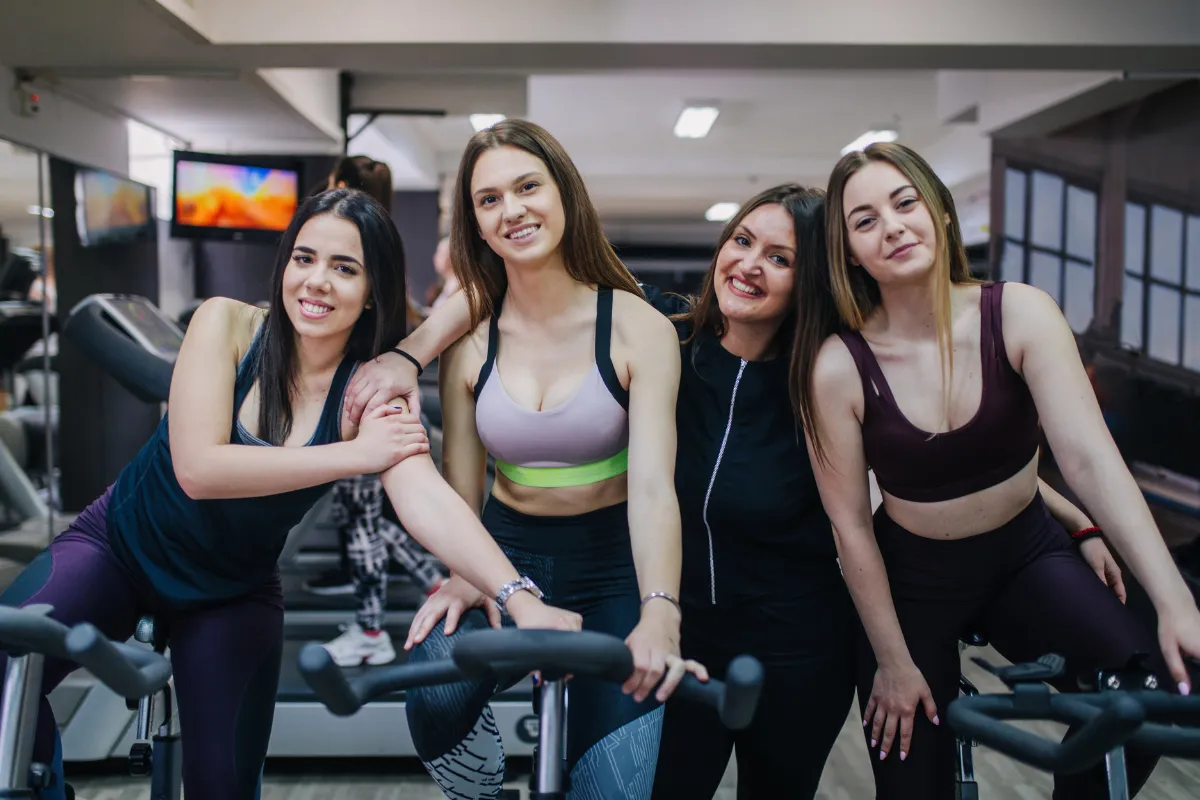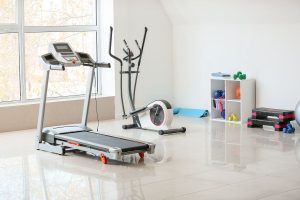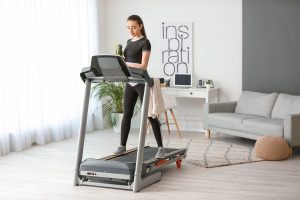
Leg day workout refers to a workout session when you focus all your attention on developing your lower body muscles. This workout session includes your quads, hamstrings, glutes, calves, and sometimes the lower back. Leg day workouts often involve exercises such as squats, lunges, deadlifts, leg presses, calf raises, and other leg-specific exercises.
Post-workout recovery and cardio are both essential for overall fitness and achieving fitness goals. Recovery after a workout is crucial for muscle growth and repair. On the other hand, cardio is essential to improve your heart and lung function, burn calories and increase endurance. Regular cardio can help reduce the risk of heart disease, diabetes, and other health issues.
However, in this article, we are going to explore the potential benefits of cardio after leg day, which type of cardio you can do after a leg day workout, and more. You will also learn the common myths about cardio after leg day. Let’s get started!
Table of Contents
Benefits of Cardio After Leg Day
There are lots of benefits of after-leg day workouts. It’s a good concept if you perform a moderate-intensity cardio exercise session after a leg day workout. Engaging in cardio exercises after a leg day workout can offer you several benefits for your overall fitness and well-being. Here are some of the key benefits of a leg day workout:
Improved cardiovascular fitness
Performing cardio exercises after a leg day workout such as running, cycling, or using the elliptical machine can help to improve your cardiovascular fitness. This is because these exercises increase your heart rate and improve the efficiency of your heart and lungs, leading to better oxygen and nutrient delivery to your muscles. Therefore, exercise Improves your cardiovascular fitness.
Increased calorie burn
Cardio exercise is a great way to burn calories. It can help you maintain a calorie deficit if you’re looking to lose weight. By doing cardio after a leg day workout, you can take advantage of the Excess post-exercise oxygen consumption (EPOC) effect. It means that your body continues to burn calories even after you’ve finished exercising.
Improved muscle recovery
Performing light to moderate cardio after a leg day workout can help you to improve your muscle recovery. Even if it may seem to reverse against reality. This is because cardio helps to increase blood flow and circulation. Because it can aid in the removal of metabolic waste products from your muscles. It also delivers nutrients to your body that can help to repair and rebuild your muscle tissue.
Reduced risk of injury
Doing cardio after a leg day workout also can help to reduce your risk of injury. Because it improves your flexibility and range of motion. This is because cardio exercises often involve movements that require your muscles to stretch and move in different ways. So, it can help to prevent tightness and immobility that can lead to injury. Besides, cardio exercise can help to strengthen your bones and connective tissues, making them more resilient and less prone to injury.
Related: when it comes to working out your glutes, not all cardio exercises are created equal. Some can help you tone and strengthen your glutes, while others may not do much for them. Here are the worst and best cardio exercises for your glutes.
Types of Cardio to do After Leg Day
There are many different types of cardio exercises that you can do after a leg day workout. But remember that you should do these exercises depending on your fitness level, preferences, and available equipment. Here are a few examples that you can do:
Low-impact options
Low-impact cardio is a form of activity that improves your heart rate. It also minimizes the amount of stress you put your joints under. Low-impact cardio exercises are great options for you if you want to get your heart rate up and burn calories without putting too much stress on your joints. Here are two examples of low-impact cardio exercises you can perform:
- Cycling: Cycling is a low-impact cardio exercise that can be done on a stationary bike or outdoors. It’s a great way to work on your legs and glutes while also getting cardio exercise. It is mainly an aerobic activity, which indicates that your heart, blood vessels, and lungs all get a workout.
- Swimming: Swimming is a low-impact workout that is easy on your joints and great for your overall fitness. It works your entire body and can be done at your own pace. it is a suitable exercise for you if you want to increase your fitness levels.
High-intensity options
HIIT (High-intensity interval training) is a form of cardio. It involves short bursts of intense exercise followed by periods of rest or low-intensity exercise. This type of workout can be very effective for burning calories and improving cardiovascular fitness. Here are two examples of low-impact cardio exercises you can perform:
- Running: Running is a great way to improve your cardiovascular fitness and build leg strength. It involves sprinting for a short distance followed by a period of rest or walking. You can do this on a track, treadmill, or in an open area.
- Jumping Rope: Jumping rope is a high-intensity exercise that can be done anywhere with a jump rope. It’s a wonderful way to enhance cardiovascular fitness and coordination.
Recommendations for Selecting the Best Type of Cardio for Your Goals and Fitness Level
Cardio exercise enriches many aspects of health. It improves your heart health, mental health, mood, sleep, weight regulation, and metabolism. However, when selecting the best type of cardio for your goals and fitness level, you should consider the following directions. Here are some recommendations to consider:
- Consider your fitness level: Choose a type of cardio that is suitable for your fitness level. If you’re just starting, it’s best to start with low-impact activities like walking or cycling. You can gradually increase the intensity and duration of your workouts as your fitness improves.
- Identify your goals: Determine what you want to acquire with your cardio workouts after leg day. Are you want to improve your cardiovascular fitness, endurance, and overall health? Then low-intensity, longer-duration cardio workouts like walking, cycling, or swimming may be the best choice. If you want to burn fat and build muscle, high-intensity interval training (HIIT) exercises can be effective.
- Vary your routine: It’s essential to vary your cardio routine to prevent boredom after a leg day workout. Because you should challenge your body in different ways. Combining a mix of low-intensity and high-intensity cardio workouts can help you achieve a well-rounded fitness routine.
- Consider your preferences: Choose a type of cardio that you enjoy and that you’re more likely to stick with. If you enjoy outdoor activities, hiking or cycling could be a fantastic option. You also can prefer to work out indoors, the elliptical machine, rowing machine, or stationary bike.
Important: Finding the best cardio for bad knees can be challenging. Low-impact exercises like cycling and swimming are good options, while high-impact activities like running and jumping can be too much.
How to Incorporate Cardio Into Your Post-Leg Day Routine
Incorporating cardio into your post-leg day routine can help improve your cardiovascular fitness and aid in recovery. It also promotes overall health and well-being. However, it’s essential to take an incremental and balanced approach to avoid injury. When incorporating cardio into your post-leg day routine, here are some considerations you need to keep in mind:
Timing considerations
It’s normally recommended to wait at least 30 minutes after your leg day workout before doing a cardio workout. This allows your muscles to recover and reduces the risk of injury. You can do cardio later in the day or even the next day, relying on your preferences.
The intensity level and duration of the cardio session
The intensity and duration of your cardio exercise session will depend on your fitness level and goals. If you’re new to exercise, it’s best to start with a low to moderate intensity. Then it would help if you gradually increased the duration and intensity over time. If you’re more advanced, you can incorporate high-intensity interval training (HIIT).
Importance of listening to your body and adjusting your routine as needed
It’s also necessary to listen to your body and adjust your routine as needed. If you’re feeling sore, it’s alright to do a lower-intensity cardio exercise or take a rest day. On the other hand, if you’re feeling energized, you can push yourself a little harder. It’s essential to find the right balance between challenging your body.
Common Myths About Cardio After Leg Day
Here are some common myths about cardio after leg day and why they are not true:
Myth: Cardio will decrease muscle gains
Reality: Excessive cardio can indeed interfere with muscle gains. But it is also true that moderate-intensity cardio after leg day can even aid in recovery and improve cardiovascular fitness. However, it doesn’t negatively impact your muscle gains.
Myth: Doing cardio too soon after leg day can hinder recovery and cause injury
Reality: It’s generally recommended to wait at least 30 minutes after a leg day training before doing cardio. This period allows for muscle recovery. However, doing moderate-intensity cardio can help with recovery. It increases blood flow and oxygen to your muscles. It also reduces your soreness and promotes healing. Keep in mind that, you need to be sure to choose a type of cardio exercise that is suitable for your fitness level and avoid overdoing it.
Myth: Rest is the best way to recover after leg day, and doing any kind of activity, including cardio, will slow down the recovery process.
Reality: While rest is important for muscle recovery, some low-impact cardio activities can help promote your blood flow and reduce your muscle soreness. These exercises are such as walking or gentle cycling. It’s important to find the right balance between rest and activity and to listen to your body to determine the best approach for your individual needs.
The Bottom Lines
There are many benefits of cardio after leg day. It improves your cardiovascular fitness, increases calorie burn, improves muscle recovery, and reduces the risk of injury. By engaging in low-impact cardio activities such as walking, cycling, or swimming, you can increase your blood flow, reduce muscle soreness, and aid in muscle recovery, without negatively impacting muscle gains.
However. It’s essential to find the right balance between rest and activity. You also need to choose a type of cardio that is appropriate for your fitness level and goals. So, if you’re looking to improve your leg day recovery and overall fitness, consider incorporating some moderate-intensity cardio into your post-leg day routine for optimal results.





